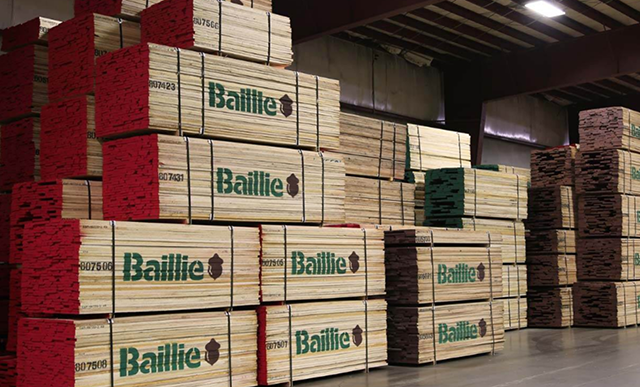Meeting Your Modern SAP Landscape Requirements
Meet the Authors
Key Takeaways
The Intel Xeon 6 processor family offers advancements in SAP workloads with both Performance Cores (P-cores) and Efficiency Cores (E-cores), enhancing scalability and energy efficiency while improving total cost of ownership (TCO) for organizations.
Enterprise users can achieve significant memory capacity and consolidation potential with the Xeon 6 processors, allowing up to 8TB SAP HANA systems on 2-socket configurations and resulting in up to 26:1 server consolidation opportunities.
The introduction of Compute Express Link (CXL) 2.0 technology in the Xeon 6 platform allows for optimized compute and memory management, further reducing TCO and enhancing the overall efficiency of SAP landscapes.
SAP systems are a central component for many organizations, supporting essential operations from enterprise resource planning to complex data analytics. As technology progresses, maintaining these environments involves addressing ongoing requirements for performance, reliability, security and sustainability, while aiming for improved total cost of ownership (TCO).
Modernization efforts or cloud transitions present technical considerations for organizations managing on-premises SAP systems, particularly regarding existing processes and customizations. Hardware refresh cycles and evolving SAP support policies also necessitate periodic updates to the underlying infrastructure.
Meeting these operational and technical requirements involves evaluating new processing technologies. The Intel Xeon 6 processor family enables improved architectures and consolidation options, designed to address the diverse needs of current and future SAP deployments.
Explore related questions
Adapting to Enterprise’s SAP requirements
Intel just launched the Xeon 6 processor portfolio, consisting of Performance Core (P-cores) & Efficiency Core (E-cores) products. This product portfolio spans the ecosystem— on-premise, embedded systems, telco systems, and certainly cloud—all based on the same Intel Xeon 6 processor technology built on the Intel 3 process node.
Intel Xeon 6 processors with P-Cores for SAP workloads will support the memory footprint of 4TB per socket. Customers can bring up to an 8TB SAP HANA system onto a 2-socket Xeon 6, whereas the previous generation required a 4-socket system for the same capacity.
Customers can deploy onto the Intel Xeon 6 with E-Core as well, since it offers SAP support for 2TB per socket, allowing 4TB HANA Deployments on 2-socket systems. The advantage of Intel Xeon 6 with E-Cores is a much lower power consumption without sacrificing the performance for SAP HANA. This represents significant savings for organizations with large SAP landscapes over the usual lifetime of five years. Intel Xeon 6 with E-Cores and Xeon 6 with P-Cores help to consolidate systems and reduce power consumption to ultimately improve cost performance and overall TCO. All of this is SAP-certified– fully tested, validated, and ready to be deployed though the SAP-certified partner ecosystem.
The Intel Xeon 6 family utilizes two distinct microarchitectures within the same platform:
The Intel Xeon 6 processor with E-Cores provides a power-efficient and scalable platform, while the Intel Xeon 6 with P-Cores provides a very high per-Core performance: the first is more suitable for SAP Business Warehouse scenarios, and the second for high transactional workload scenarios.
For SAP workloads requiring high single-thread performance and substantial scalability, Intel Xeon 6 processors with P-cores offer significant increases in core count and capability compared to previous generations.
Key technical capabilities driving SAP landscape performance and TCO
- Scalability for Large Systems: Support for SAP Scale-Up configurations ranging from 2 to 16-sockets allows for very large system configurations. They support substantial memory capacities, with 4TB per Xeon 6 socket, enabling up to 128TB for S/4HANA in scale-up and 384TB for Business Warehouse scenarios in scale-out configuration.
- Server Consolidation Potential: The capacity to manage large amounts of 4TB memory per socket can facilitate enormous consolidation opportunities with up to 26:1, meaning 26 servers from the past can be replaced with a single Xeon 6-based server, considering the performance gains only. Practically speaking, such high consolidation is not always possible, but it shows the huge improvements of Intel Xeon 6 over its predecessors.
- Optimize TCO and Balance Compute and Memory with Compute Express Link (CXL): Support for Compute Express Link (CXL) 2.0 introduces a new memory interface technology to the Intel Xeon 6 platform that enables SAP customers to substitute DDR5 Memory with CXL Memory through the CXL Flat Memory Mode. This allows SAP partners and customers to reduce the overall TCO of running SAP HANA and SAP Landscapes generally in the Cloud. CXL Flat Memory Mode, uniquely available on Intel Xeon 6 platform enables to balance the amount of compute and memory or drives TCO optimization. CXL Memory is generally less expensive than and enables the use of smaller DDR5 Modules.
Efficiency and Density: Intel Xeon 6 E-cores
Where priorities include running SAP Landscapes to improve energy efficiency, Intel Xeon 6 processors with E-cores are the best choice for SAP Partner and Customers. These processors focus on delivering to SAP’s performance requirements at a 60% lower power consumption, according to Stefan Bäuerle, Senior Vice President, Head of BTP, HANA & Persistency at SAP: “For our flagship in-memory database service SAP HANA Cloud, it is key to provide optimal price-performance and scalability while being mindful of energy consumption. We are confident that Intel’s Xeon 6 CPU with E-Cores is an important step for SAP HANA Cloud towards not sacrificing performance for energy efficiency.
For analytical workloads on SAP HANA and SAP HANA Cloud with Intel Xeon 6 processor with E-Cores showed that we are able to achieve a similar performance and scalability compared to current generations of Intel CPUs”
Intel Xeon 6 E-core technical characteristics include:
- High Core Density: Suitable for highly scalable SAP business warehouse scenarios, while reducing the overall energy consumption. Optimizing towards compute per rack or compute per watt.
- Specific HANA Support: Designed for two-socket configurations supporting SAP HANA up to 2TB per socket (4TB total) at top performance
- CXL Implementation: Also supports CXL 2.0 Flat Memory Mode, providing options to manage memory costs or balance compute to memory capacity.
What This Means for SAPinsiders
Your platform choice matters: A tailored infrastructure for your SAP Landscape.
The introduction of the Intel Xeon 6 processor family provides SAP architects and administrators with additional options when designing or upgrading infrastructure. The availability of both P-core and E-core variants allows for hardware selection tailored to specific workload profiles – whether focusing on maximizing performance for transactional systems like S/4HANA, optimizing density for scale-out analytics, or balancing cost and power consumption in cloud or on-premises deployments.
Intel architecture serves as a common foundation across SAP Certified Platforms. Intel Xeon 6 processors are integrated into the broad existing SAP ecosystem. SAP users can expect to find these processors available across SAP Certified Platforms from major OEM server vendors, public cloud providers, and within SAP RISE environments, ensuring continuity for infrastructure sourcing and support.
SAP users can make informed plans with Intel. Combining updated performance levels, scalability options, improved energy efficiency, and new technical features like CXL Flat memory mode presents new factors for consideration. SAP professionals should incorporate these capabilities into future infrastructure planning, hardware refresh cycles, capacity management, and overall modernization strategies.
Customers looking to modernize their SAP Landscape should consider the adoption of Xeon 6 with E-cores and P-cores to optimize their environment. Reach out to Intel directly, or your preferred hardware partner for further information or evaluations planned.
Discover more around Intel and SAP’s partnership here.






